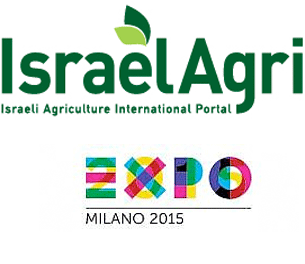Gambia: Gambia Art & Culture Profile 2012
2012/03/12
Gambia Art / Culture Profile 2012
Cultural Diversity:
Despite its small size (10,000 sq. km) The Gambia is a diverse multi-cultural society with many ethnic groups and where most people are as a result multi-lingual. Indeed it is not uncommon to find people being able to speak 3 to 4 local languages. Its size and the tempering influence of Islam in the Gambia context may indeed explain why it has a reputation for being a peaceful country as compared to that of other countries in Africa there is a minimum of inter-tribal and racial frictions.
![]()
Though Gambians themselves talk about belonging to this or that tribe the reality is that with the arrival of the Mandingo, Wollof, Fulbe, and other migrants into the river valley (circa 1200-1800) a lot of inter-marriage and adoption of other cultures and practices has taken place between these different ethnic groups. This has had the effect of blurring what differentiates one group of society from another. Traditionally children will take on the tribal identity of their father.
![]()
Culture & Traditions:
Different ethnic groups do have variations in the way they conduct marriage weddings, funerals, however, it is Islam which is the over-riding guide to such ceremonies. Indeed, those that introduced the religion itself back in the 1800's,
just like Christianity, recognised that some cultural practices had to be tolerated as long as the principle of the one God was upheld. Furthermore Christians have different local customs regarding births, deaths and marriages. So from the above it would be difficult to try to summarise what Gambian culture and tradition actually is. It is more of a mosaic of cultures that very often overlap and sometimes even merge or absorb other traditional practices such as the some of the Tukulor in the distant past. Furthermore, historically small breakaway groups of a particular tribe has been known to be absorbed by another due to war or voluntarily. The biggest noticeable difference between people today is class.
Traditional Values:
While urban migration, development projects, and modernization are bringing more and more Gambians into contact with Western habits and values, the traditional emphasis on the extended family, as well as indigenous forms of dress and celebration, remain integral to parts of everyday life. Over 80 percent of Gambians live in rural villages, although increasing numbers of young people come to the capital, Banjul, in search of work and education which has further led to the greater cultural and blood mixing of people.
Within the vicinity of most of the major tourist hotels you will find a small craft market (called bengdulas) made up of a number of small stalls offering a selection of wood carvings featuring tribal masks, elephants, hunters etc., batiks, tie dye fabric prints, trade beads, gold and silver jewellery and locally made hand woven baskets. Despite the influence of tourism in creating mass production of such art (particularly in Brikama Craft Market) you can still see authentic local handicrafts and cultural dancing in the villages along the coast and the River Gambia. Artworks can be found being peddled on the beaches as well as in craft shops.
Batiks, Tie-Dye, Waxes & Damask Cloths:
Gambian Tie dye and batiks are extravagant, rich in different shades of colour and are compulsory item to be seen at every tourist craft market and are tailored into men's Kaftans (haftans),
women's warambas (grandmubas), skirts, shirts, ladies blouses, skirts as well as bed sheets, curtains and tablecloths. Many are made by local professional women who produce the finished fabrics from their own homes using hot dye, oil drums and various techniques to produce abstract designs as well as animals, natural objects and people.
Basketware:
 Baskets are woven in either plain beige or intertwined using coloured strips of mostly dry palm leaves and are shaped into not only baskets but hand fans, table mats, lampshades, fruit bowls and a variety of other household objects. The craftsmen tend to be from Senegal and the quality is generally quite good.
Baskets are woven in either plain beige or intertwined using coloured strips of mostly dry palm leaves and are shaped into not only baskets but hand fans, table mats, lampshades, fruit bowls and a variety of other household objects. The craftsmen tend to be from Senegal and the quality is generally quite good.
Calabash & Gourds:
The gourd family, Cucurbitaceae, which includes the pumpkin and squash has many different uses. Before use as utensils the insides of the gourd is saturated in water and left to rot after which they are left to sun-dry which hardens them greatly. They are then used as ladles, storage containers and spoons (bottle gourd). The larger versions (called leket) are used to make food preparations and the Kora string instrument.
Jewellery:
Traditionally gold and silver jewellery is made by the lower caste of people called the tega in Wolof. The families that are famous for making local jewellery are the Touray, (Samba) Mbow, Jobe and Cham clans. The metals are made into bangles, bracelets, pendants, brooches, earrings, spoons and fine rings. However, you can also see wealthy women who go to special occasions dripping with hugely extravagant gold jewellery which would put MR.-T to shame!
Glass beads which one sees being peddled to tourists do not have Gambian origins. After Europeans began to mass manufacture them they bought them to West Africa and Gambia in exchange for slaves and gold with local chiefs.
Pottery:
Clay pots have been made in the Senegambia area for over 6,000 years and is the preserve of the women, with the finest examples being made by the Mandinkas, Jolas and the Serahules. This last group are mainly concentrated in the Upper River Division town of Basse and the nearby village of Alohungari where they are known to make beautifully decorated clay pots from a clay silicate mineral called kaolin (or dar) dug up from the fields or river banks. The clay is particularly suitable for making terracotta containers.
Wood Carvings:
Many Maskscarvings are huge so be prepared to pay excess to get such works back to your country. With the craftsmen of such pieces being often Fulanis or Bambaras, many busts portray tribal signs. For example there are magnificent pieces to be found in Brikama market which can be more than four feet tall with scars engraved on each cheek, temple or forehead.
You will often find in the craft markets stylized silhouettes and two dimensional forms. There are also carvings of scaled down pipe smoking hunters, warriors with a spear in the right hand which are made of the soft wood from the bombax or silk-cotton tree.
On a more practical level there are the carvings that have more domestic uses such as mortars and pestles, combs, djembe drums, salad bowls made from khankhalla and paper-knives. Another example which has seen a re-emergence is the traditional African seat which if often made of mahogany wood locally known as (jallo). Some carvers may claim that one of their creations is ebony but they are very often just stained black with charcoal and in any case you can tell whether it is ebony as it is much heavier and denser that other wood. There are also the ubiquitous forms in the shape of elephants, antelopes with suckling fawns monkeys, crocs and hippos.
Pottery is shaped and moulded by hand and without the use of a kiln or potter's wheel then it is placed into a hollow in the ground where it is subsequently fired. Many pieces are moulded to be used as water containers and coolers, colanders, cooking pots, grain storage jars called buntungo and for incense burning in the home.

Gambians are known for their excellent music, as well as their dancing. Although the Gambia is the smallest country on mainland Africa, its culture is the product of very diverse influences. The national borders outline a narrow strip on either side of the River Gambia, a body of water that has played a vital part in the nation's destiny and is known locally simply as "the River." Without natural barriers, the Gambia has become home to most of the ethnic groups that are present throughout western Africa, especially those in Senegal. Europeans also figure prominently in the nation's history because the River Gambia is navigable deep into the continent, a geographic feature that made this area one of the most profitable sites for the slave trade from the 15th through the 17th centuries. (It also made it strategic to the halt of this trade once it was outlawed in the 19th century.) Some of this history was popularized in the Alex Haley book and TV series Roots which was set in the Gambia.
The Gambia is a West African country closely linked musically with its neighbor, Senegal. Griots, (also known as Jelis), a kind of hereditary praise-singer, are common throughout the region, a legacy of the ancient Mande Empire. Gambian Griots often play the kora, a 21 string harp.
Music of the Gambia

Modern ethnic Mande in The Gambia are called the Mandinka, and they make up around 36 per cent of the country's population. The region of Brikama has produced some very famous musicians, including Amadou Bansang Jobarteh and Foday Musa Suso. The latter founded the Mandingo Griot Society in New York City in the 1970s, bringing Mande music to the New York avant-garde scene and collaborating with Bill Laswell, Philip Glass and the Kronos Quartet.
Gambian popular music began in the 1960s, when The Super Eagles and Guelewar formed while hip bands were playing American, British and Cuban music. The Super Eagles went to London in 1977, appearing on Mike Raven's Band Call. They played merengue and other pop genres with an African flourish, including Wolof lyrics and minor stylistic elements. After the performance, the band began jamming out some traditional tunes and an unknown man heard, told the group that that was the style they should be playing. This inspired the group to return to their country's musical roots, and they spent two years travelling around The Gambia and studying traditional music. The reformed band was called Ifang Bondi, and their style was Afro-Manding blues.
Gambian Laba Sosseh was a significant presence in the African and New York salsa scene. Sosseh, who relocated to Dakar, Senegal as a teenager, spent his entire career outside of the Gambia.
Civil unrest caused Ifang Bondi and most Gambian musicians to emigrate to countries like the Netherlands, decimating the nascent music industry. Today, Jaliba Kuyateh and his Kumareh band is the most popular exponent of Gambian Mandinka music. There is also a thriving Gambian hip hop scene.
Former Ifang Bondi musician Juldeh Camara has been working with Justin Adams since 2007 and has been touring all over the world.
Also from Ifang Bondi, Musa Mboob and Ousman Beyai have started a new group XamXam which started with a project in The Gambia to produce new music by taking six musicians based in the UK to The Gambia to work with top musicians from four different tribal backgrounds. Ousman Beyai moved to the UK where he worked with Musa Mboob to set up the live band XamXam.
- Gambia News
-
- AFGHANISTAN: UNWTO: International tourism – strongest half-year results since 2010
- BOTSWANA: Why governments need to support the financial sector to meet the unserved needs of smallholder farmers
- BOTSWANA: International Arrivals To Africa Reach More Than 18 Million In 2017
- BOTSWANA: Africa: USA-Africa - No Policy? Bad Policy? or Both?
- BOTSWANA: Africa: U.S. State Department To Get Experienced Diplomat in Key Africa Post
- BOTSWANA: Africa’s economic growth in 2016 was driven by East Africa
- Trending Articles
-
- SOUTH AFRICA: Nigeria and South Africa emerge from recession
- BAHRAIN: Bahrain issues new rules to encourage fintech growth
- NIGERIA: Nigeria has been one of the hardest-hit economies due to its over-dependence on oil
- ARUBA: Director of Tourism Turks and Caicos after Irma: Tourism, visitors, hotels current status
- ANGOLA: Angola: Elections / 2017 - Provisional Data Point Out Qualified Majority for MPLA
- WORLD: How fair is our food? Big companies take reins on sourcing schemes












